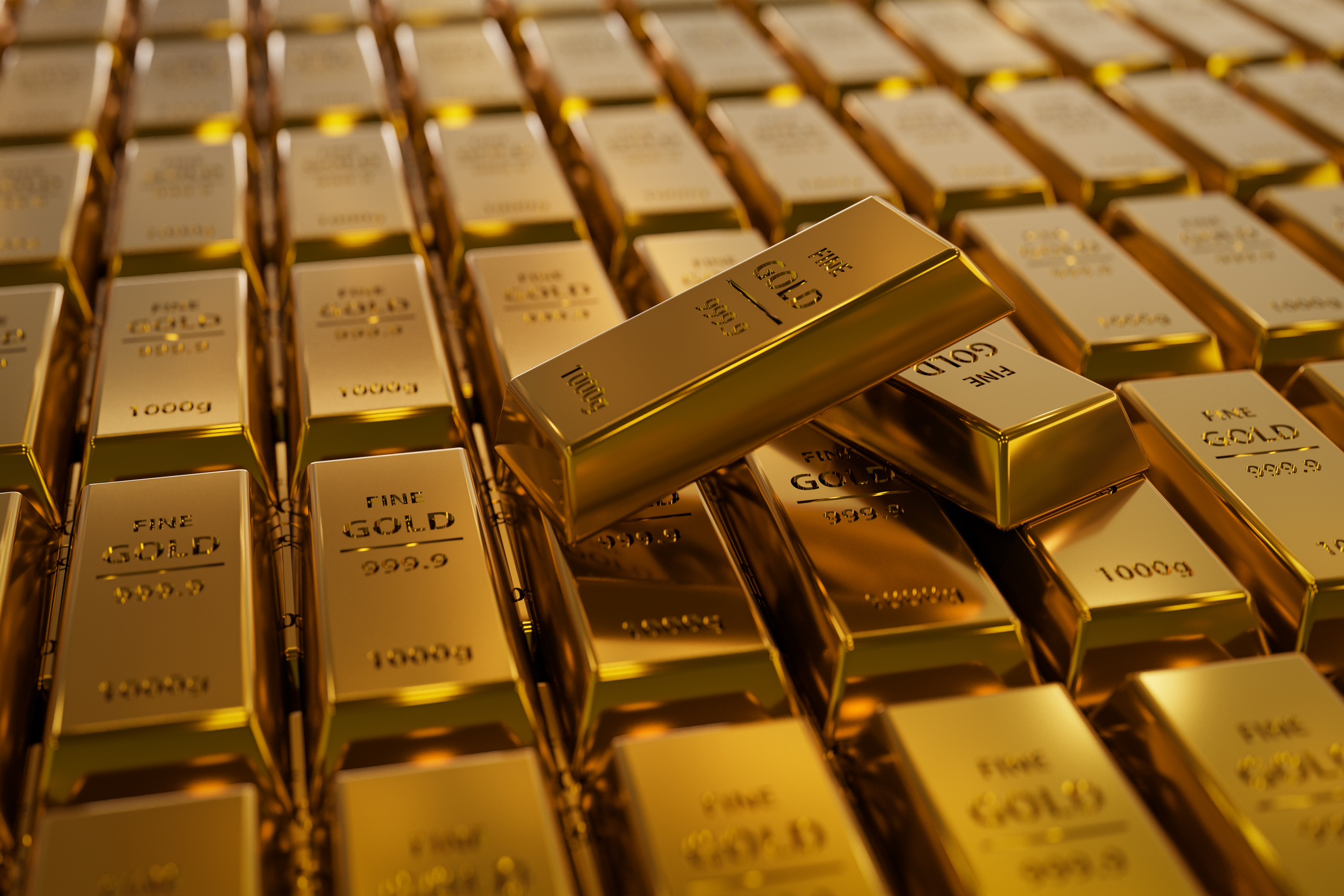Why is gold looking attractive on Wall Street?
Wall Street is taking to gold. What's pushing the commodity to be attractive?

“There’s a new gold rush,” says Paul La Monica in Barron’s. Not in California, but “on Wall Street”.
The yellow metal has climbed a fifth this year and recently gold hit a new record high in dollar terms. It has eased back from August's record of $2,531.70 an ounce (oz) to trade at around $2,475/oz (£1,886/oz).
How are US rate cuts helping gold?
Gold’s latest spurt came as the Federal Reserve chair Jerome Powell signalled interest rate cuts ahead. US rate cuts help gold in two ways. Firstly, gold is normally priced in dollars. Lower interest rates tend to weaken the greenback, meaning that more dollars are required to buy an ounce of gold than before. Secondly, interest-rate cuts reduce the yields available on bonds, which are gold’s main competitor as a safe-haven asset, says Étienne Goetz in Les Echos. With less competition, the yellow metal is able to shine.
MoneyWeek
Subscribe to MoneyWeek today and get your first six magazine issues absolutely FREE

Sign up to Money Morning
Don't miss the latest investment and personal finances news, market analysis, plus money-saving tips with our free twice-daily newsletter
Don't miss the latest investment and personal finances news, market analysis, plus money-saving tips with our free twice-daily newsletter
The “surge” in gold prices has been underpinned by “phenomenal appetite” from central banks – especially in countries not aligned with the US. Monetary authorities have bought more than 1,000 tonnes of gold each year for the past two years, a level of buying not seen in five decades.
What's driving the demand for gold?
Gold has no counterparty, making it “the anti-currency” and anti-banking asset of choice, Keith Weiner of Monetary Metals told Aly Yale for CBS.
When people “lose confidence in the stability of their national currencies, they turn to gold as a hedge”. Demand is being driven by deep anxieties about “debt levels, abuse of monetary policy, and either fear or desire for de-dollarisation.” With a contentious presidential election coming up, there is plenty of fear to go around. Analysts tip the metal to reach anywhere from $2,600 to $3,000 an ounce over the coming months.
This article was first published in MoneyWeek's magazine. Enjoy exclusive early access to news, opinion and analysis from our team of financial experts with a MoneyWeek subscription.
Read more
Get the latest financial news, insights and expert analysis from our award-winning MoneyWeek team, to help you understand what really matters when it comes to your finances.
Alex is an investment writer who has been contributing to MoneyWeek since 2015. He has been the magazine’s markets editor since 2019.
Alex has a passion for demystifying the often arcane world of finance for a general readership. While financial media tends to focus compulsively on the latest trend, the best opportunities can lie forgotten elsewhere.
He is especially interested in European equities – where his fluent French helps him to cover the continent’s largest bourse – and emerging markets, where his experience living in Beijing, and conversational Chinese, prove useful.
Hailing from Leeds, he studied Philosophy, Politics and Economics at the University of Oxford. He also holds a Master of Public Health from the University of Manchester.
-
 Are you being haunted by the ghost of Christmas past? How festive cutbacks could boost your long-term wealth
Are you being haunted by the ghost of Christmas past? How festive cutbacks could boost your long-term wealthThe average family spends around £1,000 over the Christmas season. Here’s how much you could have gained if you had invested some of the money instead.
-
 5 investment trusts for your pension
5 investment trusts for your pensionInvestment trusts are often a good choice for long term growth and income options, but which ones should you consider for your pension?
-
 Stock markets have a mountain to climb: opt for resilience, growth and value
Stock markets have a mountain to climb: opt for resilience, growth and valueOpinion Julian Wheeler, partner and US equity specialist, Shard Capital, highlights three US stocks where he would put his money
-
 The steady rise of stablecoins
The steady rise of stablecoinsInnovations in cryptocurrency have created stablecoins, a new form of money. Trump is an enthusiastic supporter, but its benefits are not yet clear
-
 SRT Marine Systems: A leader in marine technology
SRT Marine Systems: A leader in marine technologySRT Marine Systems is thriving and has a bulging order book, says Dr Michael Tubbs
-
 Goodwin: A superlative British manufacturer to buy now
Goodwin: A superlative British manufacturer to buy nowVeteran engineering group Goodwin has created a new profit engine. But following its tremendous run, can investors still afford the shares?
-
 A change in leadership: Is US stock market exceptionalism over?
A change in leadership: Is US stock market exceptionalism over?US stocks trailed the rest of the world in 2025. Is this a sign that a long-overdue shift is underway?
-
 A reckoning is coming for unnecessary investment trusts
A reckoning is coming for unnecessary investment trustsInvestment trusts that don’t use their structural advantages will find it increasingly hard to survive, says Rupert Hargreaves
-
 Metals and AI power emerging markets
Metals and AI power emerging marketsThis year’s big emerging market winners have tended to offer exposure to one of 2025’s two winning trends – AI-focused tech and the global metals rally
-
 8 of the best houses for sale with beautiful fireplaces
8 of the best houses for sale with beautiful fireplacesThe best houses for sale with beautiful fireplaces – from a 15th-century cottage in Kent to a 17th-century palazzo in Oxfordshire